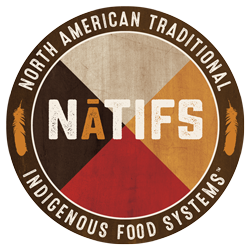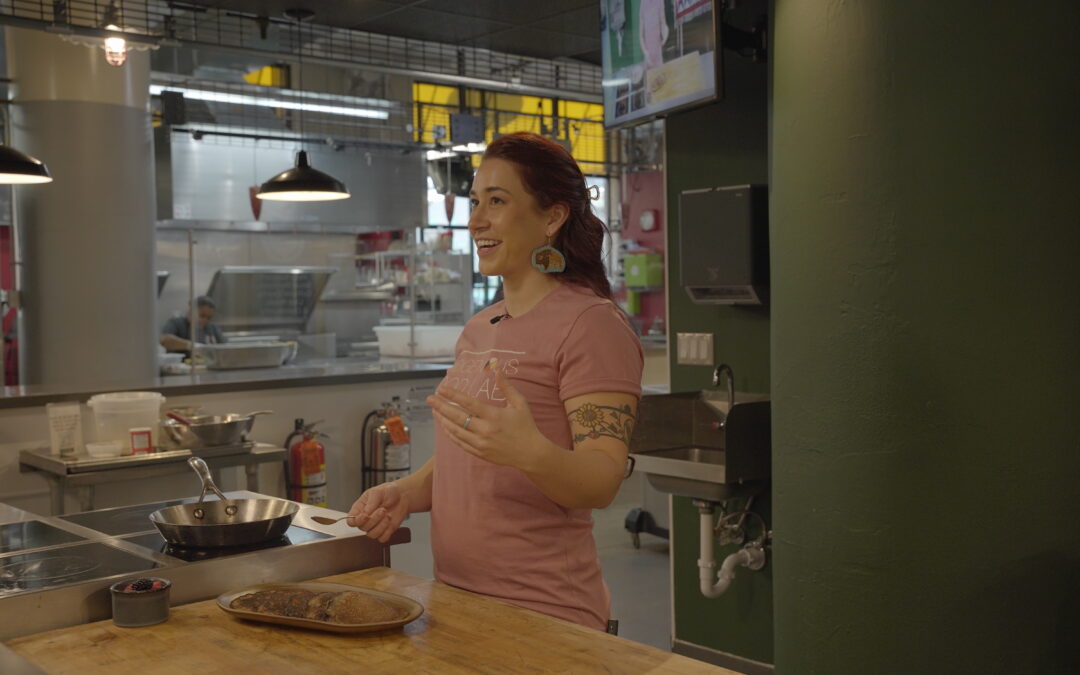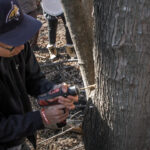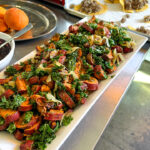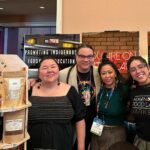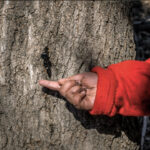When Mariah Gladstone (Blackfeet, Cherokee) was in college, she was hanging out in her dorm one day and smelled burning.
She followed her nose to the source, as one does. She found a dormmate making cookies. Following the recipe, she placed the cookies on a baking sheet and put them in the oven. The only problem– she wasn’t a cook or a baker, and she didn’t know what a baking sheet was. She placed the cookies on a standard piece of paper– a “sheet,” and put them in the oven.
This anecdote, while funny, illustrated something for Gladstone– not everyone knows how to cook, not everyone learns how to cook, and not everyone has the inherent knowledge that many cookbooks and recipes assume we all know.
Beyond the realm of packaged cookies, the inherent culinary technique can very quickly get increasingly more esoteric than baking sheets— very often delving into French terminology and technique– the place where American cooking generally draws its inspiration.
This, combined with what she realized was the very obvious need for food system revitalization on her reservation (her family lives 40 miles away from the nearest grocery store, for starters) inspired her to found her business, Indigikitchen, an online cooking show dedicated to re-indigenizing diets using digital media.
Gladstone joined NATIFS as a guest chef last month, collaborating in the inauguration of NATIF’S own Indigenous Studio and Demonstration Kitchen.
In her videos, Gladstone is friendly and straightforward, and peppers her demos with language like “super simple,” and “a matter of minutes.” She emphasizes the ease of substituting ingredients. In her video for Blue Corn Crusted Fish with Squash Noodles, she has exactly two pieces of equipment in front of her– a pie pan, and a skillet.
“There’s a lot of terminology that folks who grew up in reservation communities just don’t have in the back of their brain. And we can’t assume that people will be Googling every word they don’t know immediately.”
Breaking down barriers to scratch cooking is absolutely crucial for tribal communities to get back in touch with the ancestral knowledge of cooking, and that can look quite a bit different than perusing cookbooks or using fractions to scale recipes, for instance.
“I had my next-door neighbor call me in a panic because she was making Rice A Roni and she didn’t know what a saucepan was. I told her it’s a pot, but like, we don’t say ‘saucepan.’ We say ‘pot.’”
She adds that statistically, Native boomer women use Facebook more than any other cultural community and that digital cooking videos are particularly helpful and accessible for that demographic.
For the NATIFS partnership, Gladstone was tapped to create cooking videos geared toward schools in Native communities, such as Red Cloud Indian School on Pine Ridge– the same reservation Sean Sherman grew up on, which is in the process of transitioning to more culturally appropriate school lunches for their students. She recorded about 10 videos for these purposes, which will also become available to the general public upon completion.
Examples of dishes include blue corn turkey nuggets, and an adaptation of Sloppy Joes that substitutes ground bison and grits instead of buns, called “Spoon Burgers,” and incorporates wild plums into the sauce. Recipes like these– delicious, nutritious, kid-friendly– are actually a big departure from even standard school lunch program food, often overwhelmingly heat-and-eat and highly processed.
Part of NATIFS’ ongoing mission is to work in tandem with the USDA to incorporate healthy, culturally appropriate food in school lunch programs and other federal food and agricultural programs and institutions. A previous initiative included providing a recipe and video to facilitate incorporating wild rice into Minnesota school lunches.
Logistical guides and resources such as these including not just recipes but also historical and cultural context, information on growing and harvesting traditional foods, and helpful hints for scaling and cooking skills are crucial for incorporating traditional foods into large institutions such as schools.
“The most important thing is that people not only have the recipes but that they are actually able to use them,” Gladstone explains. “You can take intimidating vegetables – I know a lot of adults who don’t know how to cook Butternut Squash for instance– but if you see a video you’re like, ‘Oh, okay, I can deal with that.’ Not everyone had access to these resources when they were growing up,” she reminds us.
Rekindling and empowering Indigenous knowledge and heritage– and then getting those capabilities to the people who need them– is the guiding principle of NATIFS.
